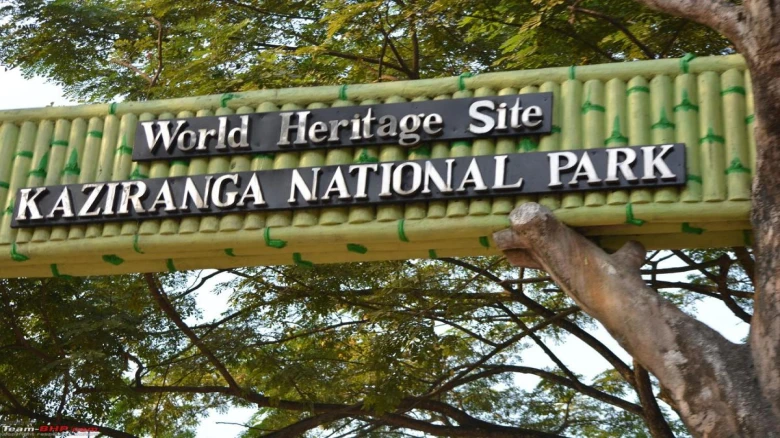Many of these are currently classified as endangered species and are only found in small parts of the state, most notably Kaziranga National Park.
Digital Desk: Kaziranga National Park and Tiger Reserve, a UNESCO World Heritage Site, is celebrating its 50th anniversary today.
KNP, which is perfectly located in the Indian state of Assam, offers a perfect home for a diverse range of wildlife species. Kaziranga, a popular national park among wildlife aficionados, is located at the base of the Mikir-Karbi Anglang Hills, approximately 8 km east of Guwahati, and shares a boundary with the southern bank of the Brahmaputra River.
Many of these are currently classified as endangered species and are only found in small parts of the state, most notably Kaziranga National Park.
In 1905, the area was declared a Forest Reserve, and in 1950, after the country gained its independence, Kaziranga was named a Wildlife Sanctuary. Animal preservation was challenging, though, because there was no forest legislation in effect at the time. Assam National Parks Act was passed by the government of Assam in 1968. Nevertheless, the Wildlife Protection Act was finally made national in 1972.
On February 11, 1974, there was good news. Because of Kaziranga's remarkable and varied biodiversity, the central government declared it a National Park.
After a colorful chapter full of chances and difficulties, Kaziranga National Park has celebrated fifty years since that historic day.
The one-horned rhinoceros, diverse wildlife, and exceptional natural setting of Kaziranga National Park earned its recognition as a World Heritage Site by UNESCO in 1985.
Over the course of 50 years, the range of Kaziranga has expanded by 10 times, from 425 square kilometers to 1,300 square kilometers.
In the last century, Kaziranga National Park has served as a home to numerous endangered species. According to one report, the park is home to roughly 60% of the world's population of Indian one-horned rhinoceroses, 50% of the endangered Asiatic wild water buffalo, and approximately 400 eastern swamp deer.

Leave A Comment